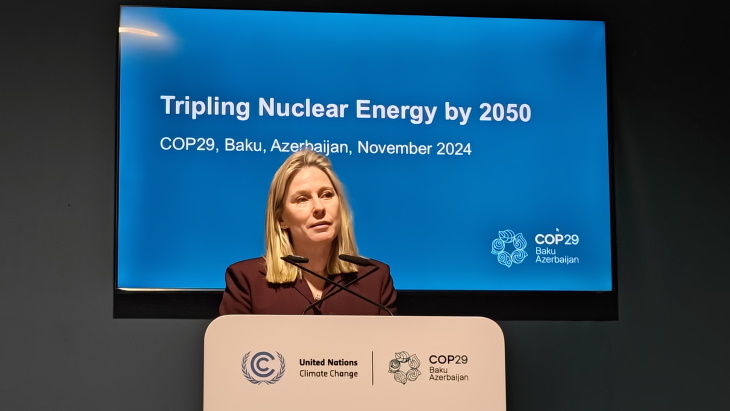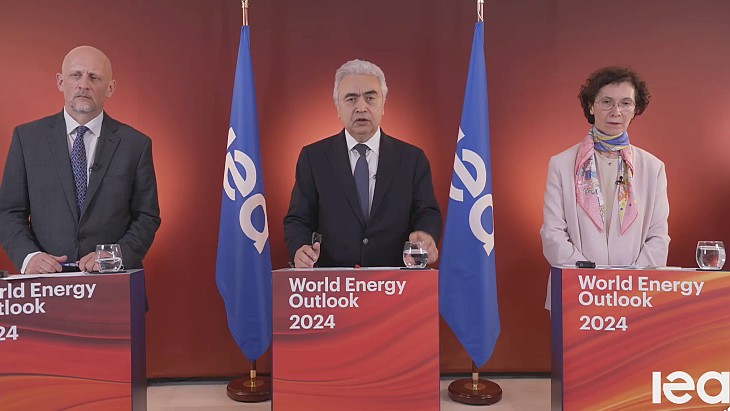Electric vehicles and opportunities for nuclear energy

The acceleration in global sales of electric vehicles (EVs) over the past six years is a key litmus test signalling the reality of this shift, the CEO of Bannerman Resources said. The initial penetration of EVs into the world economy has been driven by incentives supporting their use, and by 2050 they will be "baked in" by bans on vehicles with internal combustion engines (ICE), he said. However, in the meantime, the next phase of uptake will be consumer led, driven by the features and benefits of EVs.
EVs offer engineering benefits with less moving parts than ICE vehicles, with higher efficiency, lower running costs, CO2 emission reductions - provided they are powered from a decarbonised grid, noise pollution reductions, and no exhaust emissions. These benefits will shift consumer perception of EVs, he said.
Challenges are the high upfront costs compared to ICE vehicles - although running costs are lower; consumer anxiety about the range of the vehicle; and standardisation in charging availability, which will be important to achieve a widespread uptake of EVs, Munro said. Different charging scenarios - and the time taken to charge a vehicle - will be key, and will have profound impacts on the electricity grid.
Currently, EVs are charged either by "slow" charging at private homes or public charging points, or rapid DC charging at public charging points. Flash charging - where an overhead charger provides a short but intense burst of charge - is very attractive for electric bus routes, where a charging can take place when the bus is at a stop, providing enough capacity to enable the vehicle to reach the next charge point, and is already in existence.
The next development in this area will be in-road charging built into the road surface, where vehicles can pick up charge at points along a route. There is also a possibility to use EVs to provide electricity storage and demand-side management, harnessing the electricity stored in the batteries of idle vehicles to "crowdsource" the grid.
The need to power EVs from a decarbonised grid provides opportunities for nuclear, Munro said, with policy benefits linked to clean energy sources. Growth scenarios in the International Energy Agency's (IEA) Global EV Outlook 2018 see global electricity consumption from EVs reaching 404 TWh (New Policies scenario) and 928 TWh (EV30@30 scenario) by 2030, with China projected to lead the way as its currently relatively small transportation fleet grows and adopts EV technology as standard.
It has already been observed that with current mobile charging, EV charge demand peaks in the morning and evening, adding extra pressure on peak electricity demands at times when renewable energy sources, notably solar, will be less available or electricity stores will be depleted. Home charging, typically overnight will deplete overnight resources, also supports the need for baseload generation, as do the future options of flash and in-road charging.
By 2030, under the IEA's EV30@30 scenario, 25 additional 1000 MWe reactors would be needed just to support the needs of EVs, Munro said. The nuclear energy industry should respond to this opportunity by anticipating the coming electrification of transport, he said, ensuring that nuclear is positioned with renewables as the clean energy source to power EVs and supporting charging options reliant on baseload generation.
The nuclear industry should take a distinct approach for each key market - in-road charging could make transport routes a prime location for SMRs - and should lobby for the grid resilience that a decarbonised transport sector will need, he said.
Nuclear must join renewables as the obvious EV energy source, Munro said. "Electrification of transport - and other forms of electrification - offer us very special opportunities to both communicate the advantages of nuclear and to build the Harmony objective," he said.

_99697.jpg)








_50521.jpg)

